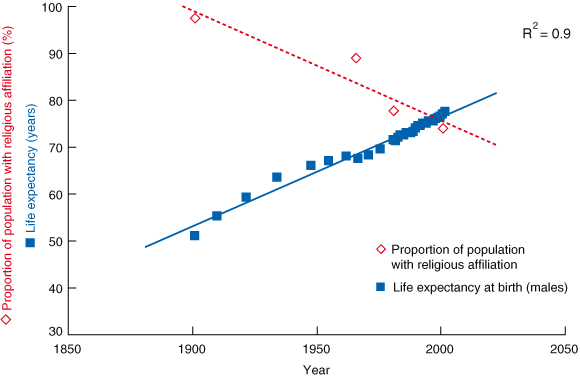To the Editor: I read with interest the recent MJA supplement on spirituality and health. It is interesting to observe the relationship between religious affiliation and life expectancy at birth over the past 100 years using population data supplied by the Australian Bureau of Statistics (Box).1,2 The life expectancy data shown here is for males, but the graph is almost identical for females. While there are many variables in this relationship, they are akin to those chiefly neglected in most of the articles in the supplement. It is easy to see from the graph that, as religious affiliation within the community has declined, life expectancy (a gross surrogate measure of health) has increased. The correlation is very good.
- Robert F Grace1
- Cairns Base Hospital, Cairns, QLD.
- 1. Australian Bureau of Statistics. Australian social trends, 2004. Canberra: ABS, 2004. (ABS Cat. No. 4102.0.)
- 2. Australian Bureau of Statistics. Australian historical population statistics, 2006. Table 48: Life expectancy at birth (years) by sex, states and territories, 1881 onwards. Canberra: ABS, 2006. (ABS Cat. No. 3105.0.65.001.)





